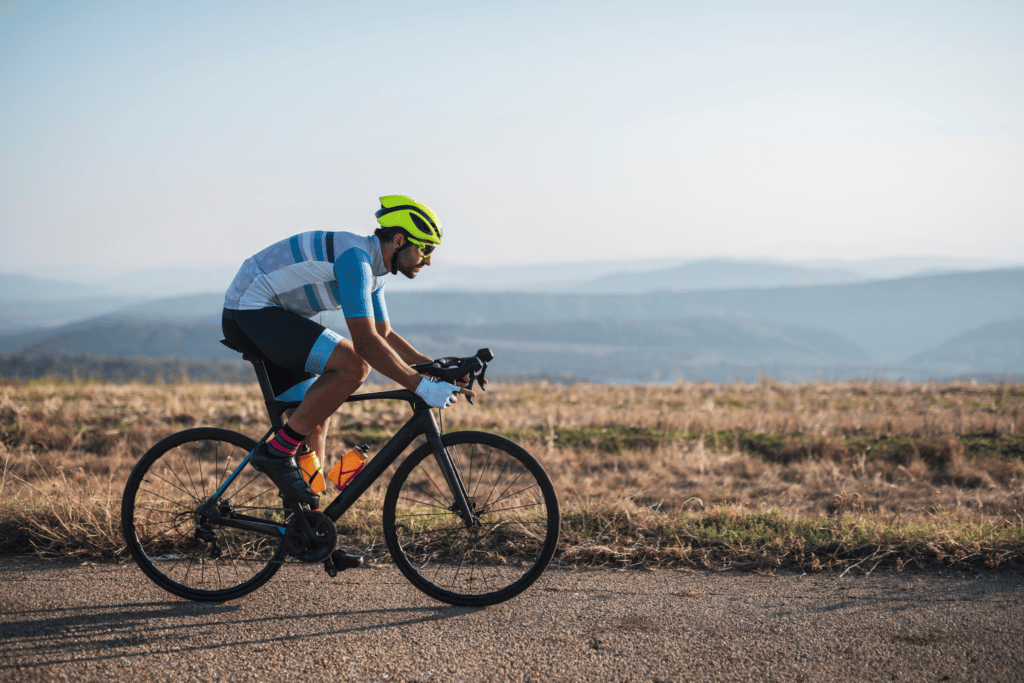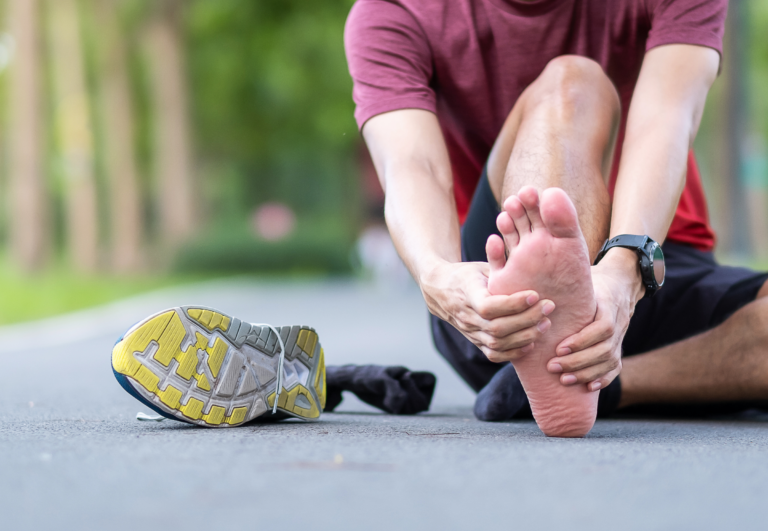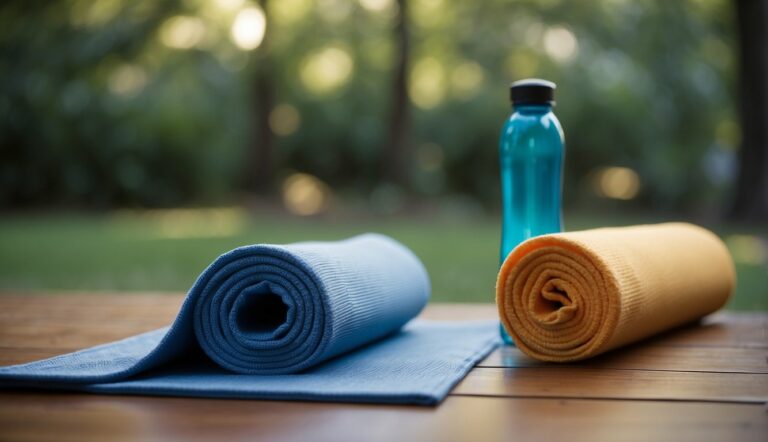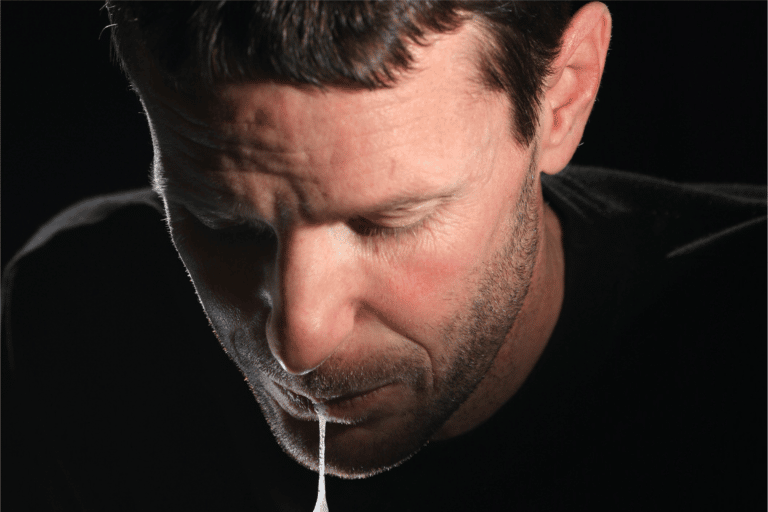Are Runners Good at Cycling? (3 Potential Cross-Training Benefits)
As an active runner, I sometimes find myself longing for different types of activities such as cycling or rowing. But, will cycling help or hurt my running performance? As a runner, will I have a head start if I decide to try cycling?
Runners are good at cycling because they’re accustomed to aerobic activities and are able to maintain the same pace for miles at a time. While these workouts use different muscle groups the complete the exercise, they’re both directed at the lower body and improve cardiovascular health. Overall, running burns about twice the calories per mile.
Keep reading to learn more about why runners are good at cycling and the similarities and differences between these activities. If you’re a runner, you may discover that you want to add cycling to your exercise roster.
Are runners good at cycling because they run?
Running is a popular exercise, likely due to its low barrier to entry, but cycling is a low-impact option that can be better for many people, including those with joint pain. When looking for an alternative (or additional) workout, are runners likely to have an advantage if they take up cycling?
Serious runners have already built up the stamina and cardiovascular health required to cycle for long distances. While cycling requires different uses of the muscles in the lower body, runners will already have well-developed muscle tone and better overall physical strength.
If you run often, then you already have the stamina and endurance it takes to cycle for long distances. It might take your muscles some time to adjust to the differences between these exercises, but as far as endurance goes, you’re set.
Runners have an easier time transferring to cycling than cyclists have adjusting to running because runners are used to having a higher oxygen intake.
Running is also harder on your joints than cycling, so you may have an easier time cycling than expected. However, cyclists often have difficulty adjusting to running because they’re not used to the wear and tear on their feet.
Cycling for runners – is it easier to get started?
Regular runners definitely have an advantage over most people – general athletes and couch potatoes – when it comes to cycling, but is it actually easy?
Runners have an easy time cycling as far as endurance goes, but training the new muscle part will take time. In addition, running and cycling don’t use the same lower body muscle groups, which means some people have difficulty with this adjustment.
If you’re a runner who enjoys aerobic activity but has difficulty with the high-impact nature, you might want to try cycling. Cycling is a lower-impact activity than running but burns fewer calories.
You can even do a little running and cycling on the same day if you want, just be sure that one activity is an easier effort.
Are runners fitter than cyclists?
Have you ever looked at someone and thought, “he’s built like a football player” or “she’s definitely played volleyball”? Each sport requires repeating distinct movements frequently and develops specific muscle groups more than others, but are cyclists fitter than runners or vice versa?
It can be hard to tell how fit a person is just by looking at them, but their regular activities can give you a clue. Between runners and cyclists, who is likely to be in better shape?
Runners tend to have more overall muscle tone than cyclists because running engages more muscle groups than cycling. Runners also tend to have greater endurance because they work out their entire body.
Overall, runners are typically deemed fitter than cyclists because they have leaner muscles due to the muscle groups they work out and how this exercise functions. Therefore, when encountering a runner, you may notice overall body definition because they exercise more muscles than cyclists.
Alternatively, when encountering a cyclist, you’ll notice that they have larger thighs, calves, and glutes because of how much focus they put on their lower body strength.
However, you may notice that cyclists often have larger thighs and calves. This is because cyclists’ muscle groups during their workout differ from the muscles runners exercise. Running is associated with overall body tone, but cycling is associated with bulky legs.
But hey, how about combining running and cycling training together for the best of both worlds?

Cycling vs running
Running and cycling are both excellent workouts when it comes to improving stamina and heart health. If you have the right equipment, both can be done either inside or outside, depending on your mood and the weather. Running is a higher impact and can lead to joint damage, but it has the advantage of being very easy to get into.
These workouts have a lot in common, but also some notable differences in the following categories:
- Calories burned
- Muscle groups used
- Oxygen intake
- Cost
| Comparison Criteria | Running | Cycling |
|---|---|---|
| Calories burned (per mile) | 100 | 50 |
| Muscle groups used | Lower body, core, arms | Lower body |
| Oxygen intake (per minute) | Higher due to additional effort | Lower due to less effort required |
| Cost | Negligible to get started; good running shoes are about $100 | Requires access to a stationary bike; cycling on the road will also require safety equipment |
Let’s look at each category and see how running and cycling stack up to each other.
Calories burned
Both running and cycling burn plenty of calories but running burns more per distance.
On average, people burn 100 calories a mile when they run. Alternatively, people generally burn 50 calories a mile from cycling. However, if you’re counting calories based on the amount of time you spend exercising, these calorie counts may balance out.
For instance, it takes a runner an average of 9 minutes to run a mile. Meanwhile, a cyclist usually takes 5 minutes to clear a mile.
Muscle groups used
Running and cycling are excellent workouts for your lower body.
When you run, your hips, glutes, and quadriceps do most of the work. Runners exercise their core muscles during their workout routine to notice overall body definition. This exercise can also give runners arm definition because they need to move their arms as they run to obtain the correct form.
Cyclists primarily used their calves, thighs, and glutes. They don’t have as much upper body strength as runners because cycling primarily focuses on lower body muscles.
Overall, runners use more muscle groups than cyclists.
Oxygen intake
Running and cycling increase your body’s oxygen intake, with running allowing you to consume more oxygen.
The faster you run or cycle, the more oxygen your body will intake during exercise. You consume more oxygen while you run because you work out more muscles during this exercise.
Depending on the distance you ride versus run, cyclists may make up for the difference by staying active for longer periods.
Cost
Most gym memberships will get you access to a treadmill or a stationary bicycle, but what if you want to enjoy the fresh air or work out without being bound to your local gym?
Running is a low-cost sport overall as you only need a decent pair of running shoes. Cycling requires not just a bicycle, but safety equipment; if you’re a serious cyclist, you’ll likely also require special clothing.
You can get decent running shoes for about $50, and even high-end ones rarely top $200. After that, you’ll probably want a good pair of socks, a pair of sweat-wicking shorts or running pants, and maybe a t-shirt.
While each element is relatively inexpensive, it’s worth keeping in mind that you’ll need to replace those shoes every 400-500 miles, and you’ll probably want several sets of clothing (plus seasonal options).
Getting started cycling, however, has a much higher upfront cost. Even a budget cycling setup will run you upwards of $1,000, and a high-end carbon bicycle, bike computer, and safety gear could easily hit $4,000, according to the blog Cycling Beginner.
How much cycling is equal to running?
If you want to cycle and burn the same amount of calories you would running, you must go double the distance.
Cycling burns half the number of calories per mile that running burns. However, you can clear more distance over the same amount of time than you would running.
When you cycle, you clear more distance in a shorter amount of time than you do when running. So, even though you burn more calories by running shorter distances, you’ll burn about the same amount of calories if you run or cycle for the same amount of time.
Do professional cyclists run?
Some professional cyclists like to run because running increases their overall endurance. However, other cyclists oppose running because running has a higher impact on their bones. Runner’s knee accounts for about 40% of running injuries.
Cycling is a low-impact sport, so many cyclists like to stick to it to keep their joints healthy. Nonetheless, many professional cyclists care about their endurance and seek to improve it by doing other workouts like running.
In fact, some runners choose cycling instead of running when injured as a way to recover and stay active at the same time.
The Ironman Triathlon is a sporting event that requires athletes to run, cycle, and swim during competition. This event requires athletes to become professionals in both running and cycling. For what it’s worth, runners seemed to have a leg up (as it were) in the triathlon, as the athletes do the running after cycling, and the foot race is often the determining factor in the final results.
Why do cyclists have bigger legs than runners?
Cyclists have bigger legs than runners because running doesn’t require as much blood flow to the legs as cycling does.
Cycling also works out different muscles in the legs than running, which is why cyclists’ legs often look bigger.

![Are Stationary Bikes Good for Runners? [Plus 3 Great Recommendations]](https://yournext.run/wp-content/uploads/2022/12/are-stationary-bikes-good-for-runners_featured-768x512.png)




